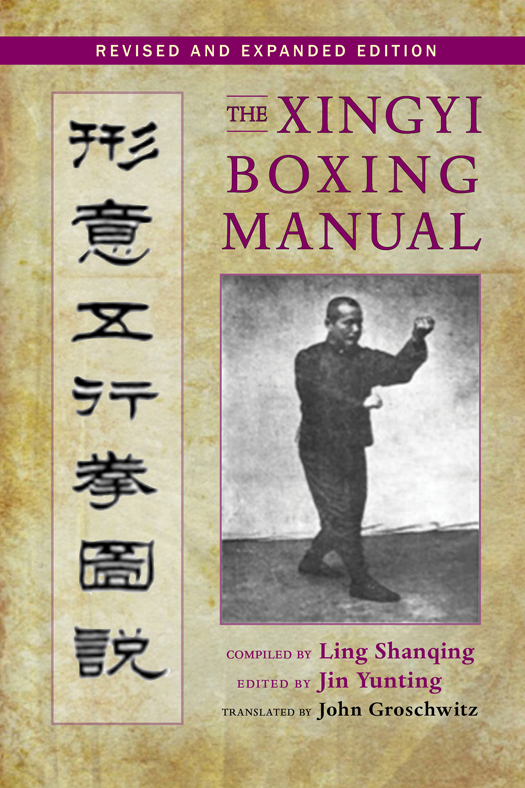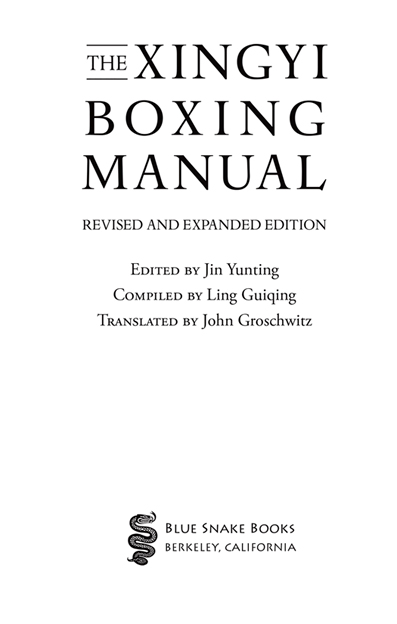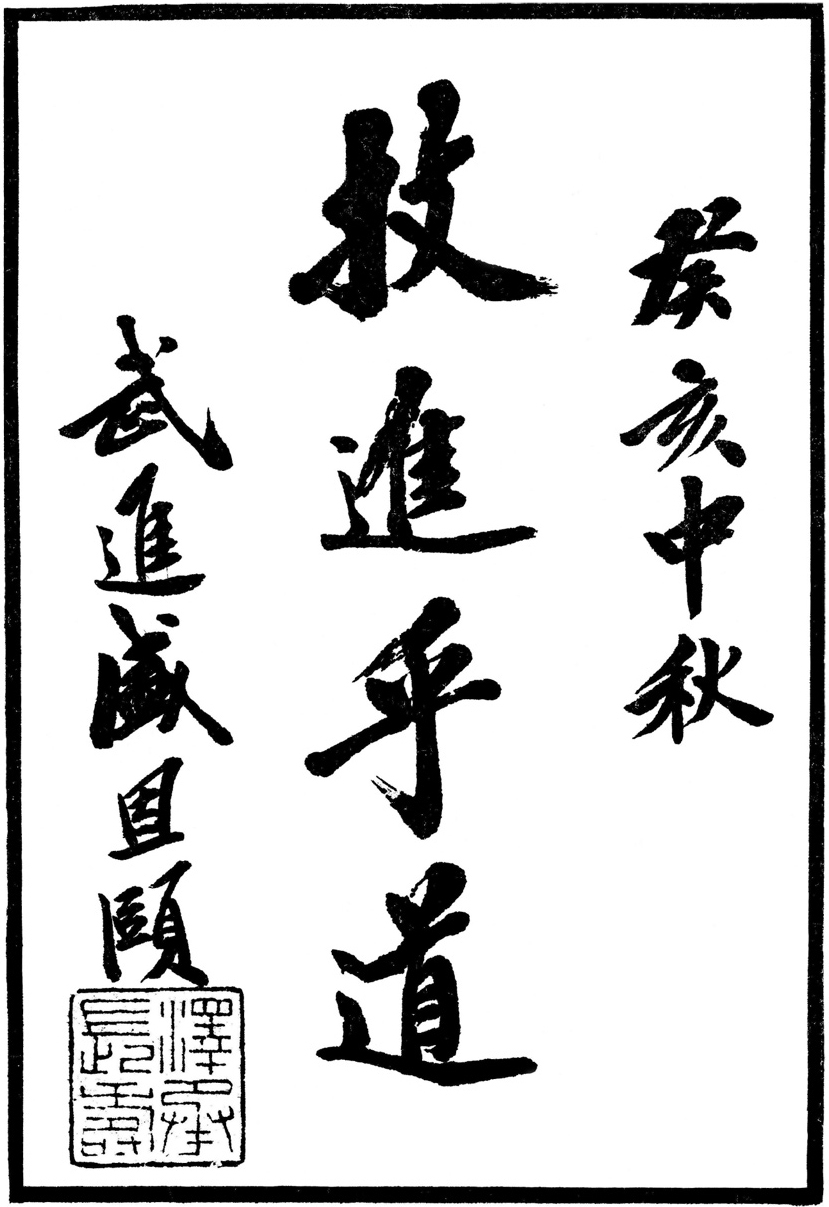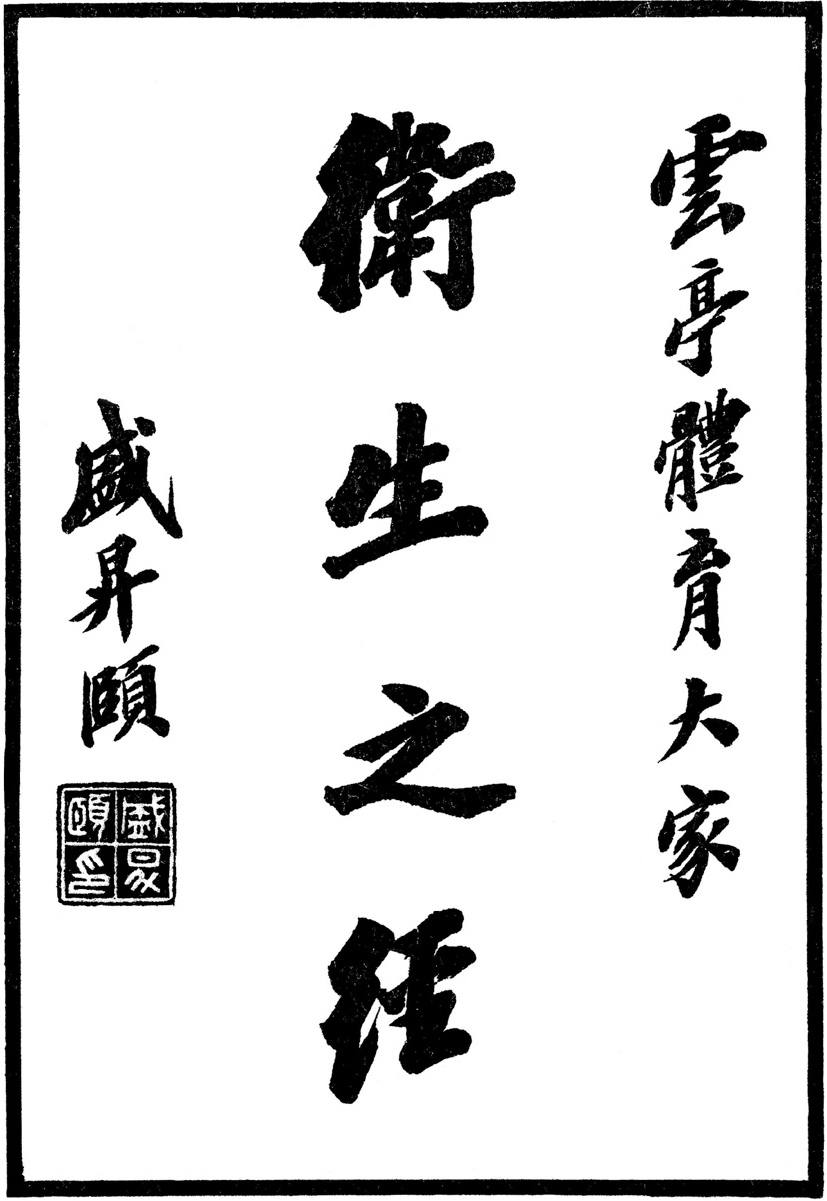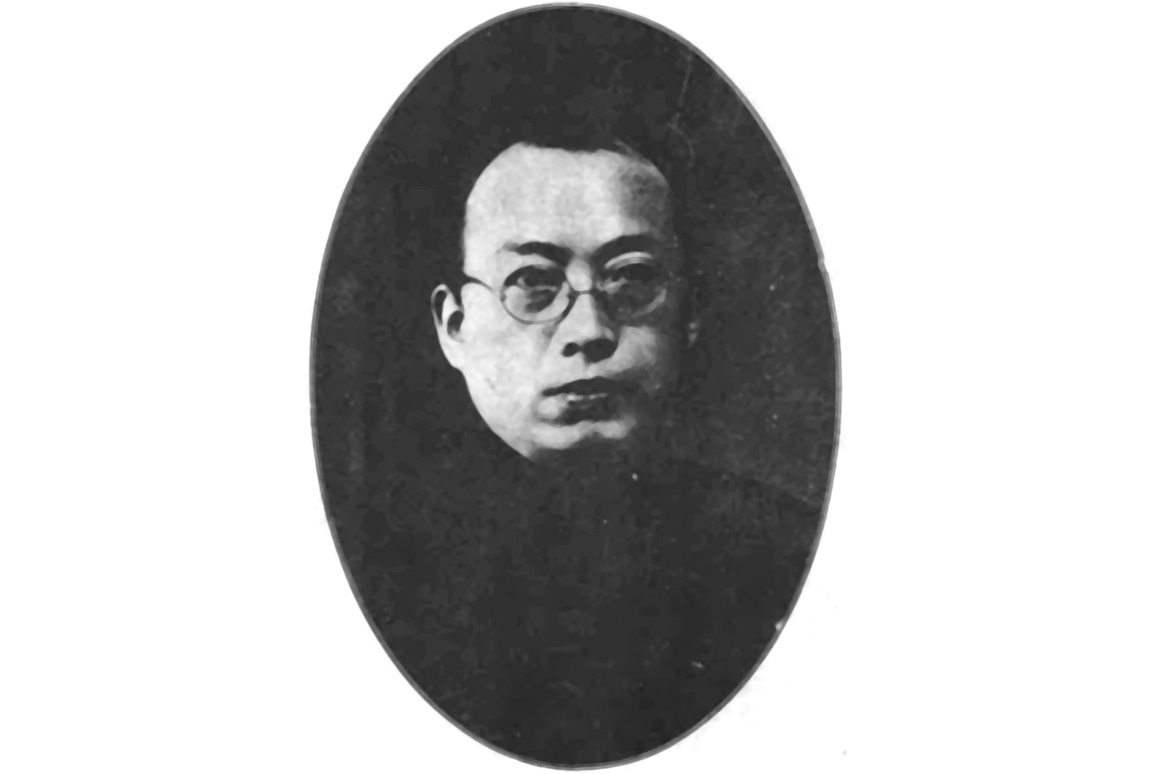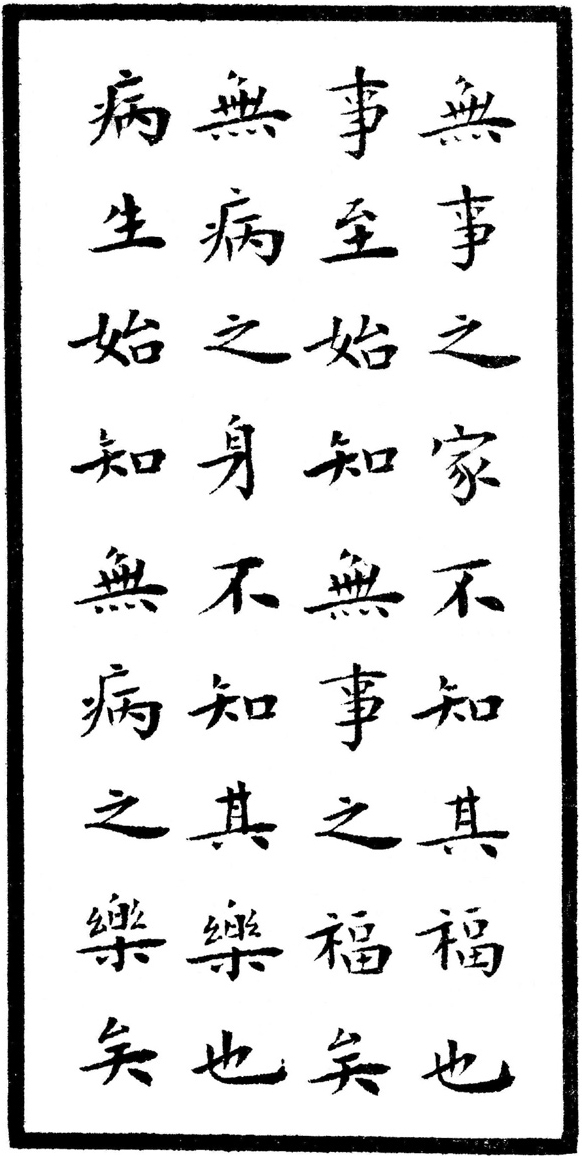Copyright 2015 by John Groschwitz. All rights reserved. No portion of this book, except for brief review, may be reproduced, stored in a retrieval system, or transmitted in any form or by any meanselectronic, mechanical, photocopying, recording, or otherwisewithout written permission of the publisher. For information, contact Blue Snake Books c/o North Atlantic Books.
Published by Blue Snake Books, an imprint of North Atlantic Books
P.O. Box 12327
Berkeley, California 94712
Cover and book design by Susan Quasha
The Xingyi Boxing Manual: Revised and Expanded Edition is sponsored and published by the Society for the Study of Native Arts and Sciences (dba North Atlantic Books), an educational nonprofit based in Berkeley, California, that collaborates with partners to develop cross-cultural perspectives, nurture holistic views of art, science, the humanities, and healing, and seed personal and global transformation by publishing work on the relationship of body, spirit, and nature.
North Atlantic Books publications are available through most bookstores. For further information, call 800-733-3000 or visit our websites at www.northatlanticbooks.com and www.bluesnakebooks.com.
Library of Congress Cataloging-in-Publication Data
[Xing yi quan pu wu gang qi yan lun. English.]
The Xingyi boxing manual / edited by Jin Yunting, compiled by Ling Guiqing, translated by John Groschwitz.Revised and Expanded Edition.
pages cm
Complete title of previous edition: The Xingyi boxing manual : Hebei styles five principles and seven words.
Includes bibliographical references.
eBook ISBN: 978-1-58394-854-5
Trade Paperback ISBN: 978-1-58394-853-8
1. Hand-to-hand fighting, Oriental. 2. Martial artsChina. I. Jin, Yunting. II. Ling, Guiqing. III. Groschwitz, John.
GV1112.X5613 2015
796.8155dc23
2014030038
v3.1
C ONTENTS
General Concepts for Compiling This Volume
[Preface to the 1930 edition]
Calligraphy from the 1931 edition. It reads (R to L):
Mid-autumn, guihai year [1923] ,
Skill approaching the Dao
Sheng Siyi of Wujin
Calligraphy from the 1931 edition. It reads (R to L):
[To] the great athlete Yunting
The path to health
Sheng Shengyi
Photo of compiler Ling Guiqing
From the 1930 edition
Photo of Jin Yunting at age forty-three
Calligraphy by Jin Bianshi of Jiading
The fifth month, guihai year [1923]
Calligraphy from the 1931 edition. It reads:
The person without troubles does not recognize their prosperity;
When troubles arrive, then one begins to know the prosperity of being worry-free .
The body without sickness does not recognize its happiness;
When sickness arises, then one begins to know the happiness of being healthy .
T RANSLATOR S P REFACE
I T HAS BEEN ROUGHLY a decade since publication of The Xingyi Boxing Manual: Hebei Styles Five Principles and Seven Words . At the time, the simple and elegant format of that slim volumecontaining the basic songs of Xingyis postures, the images and concepts associated with each element, and the guidelines for practice contained in the seven wordsseemed like an obvious and essential choice for translation into English. Only several years later did I discover that this short book, published in 1931, was itself an excerpted version of A Pictorial Explanation of Xingyi Five Element Boxing , published one year earlier in 1930. This earlier, longer version contained almost all of the material in the 1931 edition, but also offered more detailed discussions of theory, and step-by-step instructions for performing the five elements, accompanied by numerous photos and line drawings. Despite having received widespread attention in Asiait has been reprinted at least nine times by various presses in Taiwan, Hong Kong, and mainland Chinathe 1930 edition had yet to be rendered into English, and seemed even more deserving of widespread dissemination. Now, after a long interval, the English-speaking audience finally has the chance to enjoy this unique work.
The Pictorial Explanation of Xingyi Five Element Boxing is unique in several ways. First, it comes from a student of both Shang Yunxiang and Sun Lutang, themselves students of Li Cunyi and Guo Yunshen, respectively. This work then is certainly a distillation of the knowledge and experience of several of the major figures in the history of Xingyi boxing and, as such, deserves further study and contemplation. Second, it was born during the Qing/Republican Era transition when martial arts writings were undergoing a renaissance. From the theory section we learn that Jin Yunting and Li Jianqiu both moved south in the first year of the republic (191112), and from Wu Shulans foreword we see that Jin came to Shanghai in 1919. Ling Guiqing, who was in Shanghai, claims to have compiled the text for Jin, and many of the forewords and calligraphy are dated 1923, implying that the text was compiled sometime during a roughly twelve-year period, and probably in the latter five years, a few years after Sun Lutangs own Study of Xingyiquan was published, and contemporaneous with Li Jianqius The Art of Xingyiquan , published in 1920. Thus, from a comparative standpoint it offers much to broaden our understanding of the art of Xingyiquan at that time. Third, despite the notable martial arts lineage and Jins obvious social and political connections (he lived at the residence of Sheng Xuanhuai, Minister of Transportation under the Qing and head of the Imperial Bank of China), we can determine little information about him, aside from what is in his biography herein. This translation helps to record the efforts of an obviously active and skilled practitioner, and may perhaps spur others to uncover more about Jins own subsequent lineage.
This revised and expanded edition of The Xingyi Boxing Manual contains all of the material from both the 1930 and 1931 editions, along with the biographies of masters added to the first English edition. Mistakes from the first English edition have been correctedas have a few mistakes in the original Chineseand the two editions have been combined with an eye to readability. Where necessary, minor edits of the source text have been made to enhance clarity of explanation. Notes are provided as needed to clarify a specific point, though I have sought to keep these to a minimum. All terms in the book are romanized according to the Pinyin system, and all Chinese names are written according to the Chinese system, i.e., last name first, with characters for the names of Xingyi practitioners following their first occurrence in the text. Certain terms, mostly related to Chinese medicine, have been left in Chinese for claritys sake, with accompanying references.










